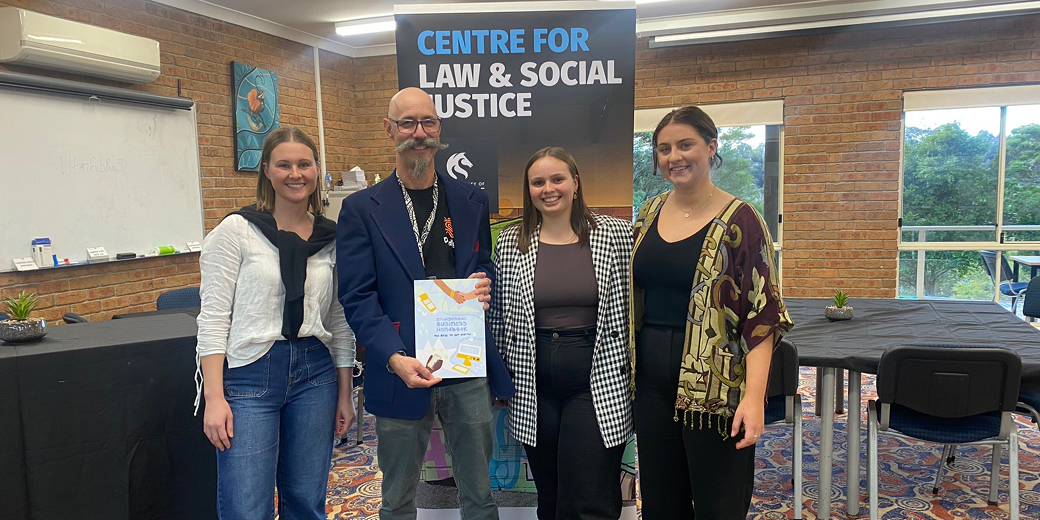People may often be the greatest asset – or the biggest problem – when it comes to leading or working in any organisation. Finding and keeping the right people, negotiating miscommunication and misunderstandings, and managing client expectations are challenges common to law firm partners and HR managers.
Specialist Director and Management Consultant, Mary Hockaday Consulting; Lecturer and Course Facilitator, Legal Practice Management Course, College of Law and Director of Education, Learning & Development for the Australasian Legal Practice Management Association (ALPMA) Mary Hockaday has over twenty years’ experience advising law firms. Insights spoke to Hockaday about how to tackle three problems common to law firms when managing people and clients, and how to solve them.
“It is an exciting time for law firms, especially if your law firm is agile and adaptable,” said Hockaday. “Technological and digital disruption is gathering pace at a far greater speed than could have been predicted just a few years ago.
“The impact on firms, lawyers and clients with respect to new business models, from BigLaw through to New Law and on-demand lawyers, the internet of things (IOT), data analytics, artificial intelligence (AI, Watson and Ross), outsourcing and e-discovery are quite extraordinary.
“Some would say we are working in turbulent times with local and global economic markets and financial pressures impacting on our firms and our clients. Does this give rise to turbulence being the new normal?”
Quoting Heraclitus 544BC – the only thing that is constant is change – Hockaday noted that firms who remain complacent and fail to adapt will not survive.
“The growth, profitability and success of any business is only as good as its people along with the firm’s strategy, structure, vision, values and operational systems that are in place,” said Hockaday.
According to Hockaday, the top three problems firms face when it comes to managing people are attraction, retention and talent management/dealing with poor performance.
How to Manage People
“In the Australasian Legal Practice Management (ALPMA) and empire group Salary and HR Issues Survey, April 2016, completed by 252 legal firms the top three issues identified were:
- Finding quality staff
- Employee retention and talent management
- Managing poor work performance”
“Employees are looking for firms with an energetic environment; vibrant leadership; opportunities, challenges and meaningful work; strong vision and values framework; a culture of diversity and inclusion; a tailored career path that includes learning and development programs to address both technical and professional development skills; and an innovative, collaborative and high performing team environment,” observed Hockaday.
To address these issues, Hockaday recommended developing a talent management strategy, which she said reflected “the firm’s attraction and retention capability to drive employee engagement.” Developing this strategy doesn’t need to be complicated, assured Hockaday. Fundamental to success, said Hockaday, is involving key stakeholders, such as partners, directors or other firm managers, to help develop and own the strategy.
Poor employee performance may improve through employee engagement. “While the ‘old school’ of performance management was to have formal meetings and records of meetings, a newer approach is far more fluid,” observed Hockaday. “There will still be a requirement for performance and development competency frameworks to be tailored to the business objectives of the firm’s strategic business plan, team business plans and the firm’s vision and values. However, performance review meetings will be more regular, short, sharp and fluid to address workflow matters and will be conducted by partners/managers.”
This requires partners/managers to develop coaching and performance management skills, which in turn, Hockaday noted, would drive better communication, delegation and supervision of matters.
“Having any difficult conversations will be held at the required time in the course of regular meetings in a non-threatening environment, not six months later, which has often been the case, much to the surprise of the employee,” said Hockaday.
She also recommends ‘work huddles’. “If you make these informal and conduct them on a regular basis – i.e. once a week – everyone in the team has an opportunity to advise on their matters, ask for work if they need and listen to other matters that are on foot. It’s a great way of building team confidence, legal learning and knowledge of clients’ matters.”
“For employees to be successful, everyone at each level needs to connect to the business in a motivated way. What does that mean? Being in a positive cultural environment, having challenging and quality work, being heard, making a difference, adding value, being innovative, being included in client meetings and discussions and ultimately being recognised, are some key factors. While remuneration is also a factor, it is not the sole driver for motivated employees,” said Hockaday.
How to Manage Clients
In terms of top three problems firms encounter when managing clients, Hockaday identified:
- building and growing client relationships,
- providing value, quality and excellence of service, and
- differing approaches to fees.
“Essential to the firm’s marketing and business development strategies is for all employees to be trained and have the necessary skills in the ‘how’, ‘what’ and ‘why’ of managing clients,” said Hockaday. “Having mentors in the firm who can share war stories of the wins, the losses and the learnings is an invaluable way of doing this. Also, as soon as any employee commences with the firm, managing clients should be a fundamental inclusion of the L&D professional development program whether that is an in-house or external program. Further, client and business development training should commence at graduate level and be tailored as part of a career path professional development plan.”
Knowing the firm’s point of differentiation is essential, advised Hockaday. “Why will clients come to you? Do you have specialist areas that your firm is recognised for, or are you trying to be all things to everyone? In our digitised, fast-moving environment, being able to articulate clearly, whether on your website or any other social media forum about who you are and what you do, is essential.”
Knowing the client’s industry, products and services is just as essential. “Clients expect you to know the law,” said Hockaday. “What they are looking for are commercial solutions to address current and future goals and objectives. If you don’t have strong knowledge of their business, products and their strategic plan, then the service you provide will meet current needs but may not go the extra mile for future needs.”
Strong relationships, both professionally and personally, are vital, as well as a ‘client centric’ firm approach. “Do you have a client strategy and an individual client business plan that will address regular meetings, communication, feedback and follow-ups?” asked Hockaday. “Client service has to be instilled into everyone in the firm because at various points in time, interaction with clients will be either on the phone or at reception or in meeting rooms, A professional personal interaction that is warm and welcoming will grow the relationship on every level. CRM software is another great tool to help you manage your clients.”
Agree on billing early. “Having a client agreement with clear scope of works, transparency of costs and a discussion with the client should the scope change, removes ambiguity,” said Hockaday.
Satisfied clients refer business and seek your help proactively. “This is your ultimate outcome as a trusted advisor to your clients,” said Hockaday.
“Law firms have shifted from ‘we are a law firm practising in law’ to ‘we are a law firm practising in the business of law,’” observed Hockday. “Most law firms are undergoing some form of transformation to keep pace with the speed of innovation, not just for themselves, but to deliver exceptional services for their clients.”
For more information about Practice Management Courses, click here.























![How to handle Direct Speech after Gan v Xie [2023] NSWCA 163](https://images4.cmp.optimizely.com/assets/Lawyer+Up+direct+speech+in+drafting+NSW+legislation+OCT232.jpg/Zz1hNDU4YzQyMjQzNzkxMWVmYjFlNGY2ODk3ZWMxNzE0Mw==)



































































